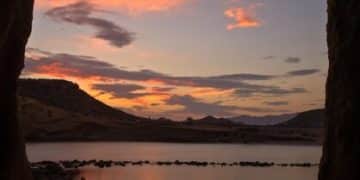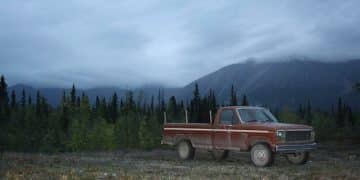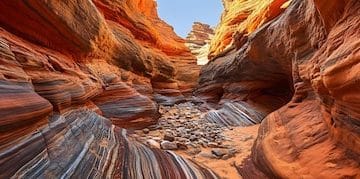National Monument Masterclass: Your 2025 Guide to US Hidden History
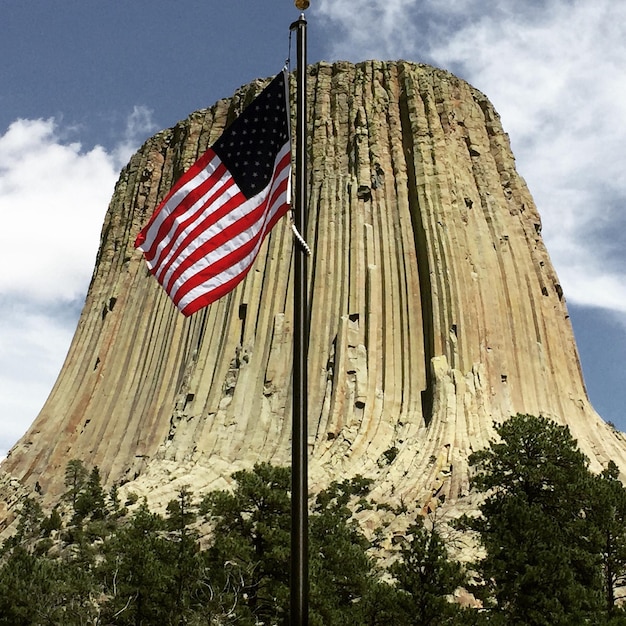
National Monument Masterclass: A 2025 Guide to Discovering America’s Hidden History unveils the strategies for planning visits to lesser-known historical sites across the U.S., encouraging travelers to deeply understand the rich cultural and natural tapestry, offering guidance to explore remote locations.
Embark on a journey to discover America’s hidden gems with the National Monument Masterclass: A 2025 Guide to Discovering America’s Hidden History. This guide is your key to unlocking the stories etched in stone and landscapes across the United States, beyond the well-trodden tourist paths.
Unveiling the Significance of National Monuments
National Monuments often play second fiddle to National Parks, but they hold immense historical, cultural, and natural significance. Understanding what makes a site a National Monument is the first step in appreciating these often-overlooked treasures.
What Defines a National Monument?
National Monuments are protected areas established by the U.S. President under the Antiquities Act of 1906. This act allows the President to designate areas of historic or scientific interest as National Monuments, offering them protection and preservation.
Why are National Monuments Important?
These monuments often preserve unique geological formations, significant historical sites, and important cultural artifacts. They provide crucial habitats for diverse flora and fauna. National Monuments allow us to connect with our past, understand our present, and safeguard our natural heritage for future generations.
National Monuments cover a diverse range of sites, from ancient Native American settlements and battlefields to geological marvels and important ecological zones. Each monument tells a unique story, contributing to the collective narrative of the United States.
- Preserve historical and cultural heritage.
- Protect unique ecosystems and geological features.
- Provide opportunities for education and recreation.
- Support scientific research and conservation efforts.
National monuments serve as outdoor classrooms, offering opportunities for learning about history, ecology, and conservation. Many monuments offer ranger-led programs, guided tours, and interactive exhibits, enriching every visit.

Exploring the world of National Monuments requires a shift in perspective. You are not just a tourist but an explorer, seeking to uncover the lesser-known stories and deepen your understanding of America’s diverse heritage. As you plan your 2025 adventures, consider including these hidden treasures for a truly enriching experience.
Planning Your National Monument Adventure in 2025
A successful trip to a National Monument requires careful planning. Start by defining your interests and consider factors such as accessibility, seasonality, and available activities.
Research and Selection
Begin by researching National Monuments that align with your interests. Consider whether you’re drawn to historical sites, natural wonders, or cultural landmarks. Use online resources, guidebooks, and travel blogs to gather information about potential destinations.
Accessibility and Logistics
Many National Monuments are located in remote areas with limited access. Check road conditions, transportation options, and accommodation availability before you travel. Some monuments may require permits or reservations, so plan accordingly.
Consider the time of year you plan to visit, as weather conditions can significantly impact your experience. Some monuments are best visited during specific seasons due to temperature, snowfall, or wildlife activity. Pack appropriate clothing and gear based on the expected conditions.
- Determine your interests (history, nature, culture).
- Check accessibility and transportation options.
- Consider the best time of year to visit.
- Obtain necessary permits and reservations.
Safety should always be a top priority when visiting National Monuments. Be aware of potential hazards such as wildlife, uneven terrain, and extreme weather. Carry essential supplies such as water, food, and a first-aid kit. Inform someone of your travel plans and stick to designated trails and areas.
With careful planning, your National Monument adventure can be a rewarding and memorable experience. Selecting the right monument, considering logistics, and preparing for potential challenges will ensure a smooth and enjoyable trip.
Must-Visit National Monuments in 2025
Selecting must-visit National Monuments is no easy task, given the variety and beauty they offer. However, some monuments stand out for their unique history, stunning landscapes, and exceptional visitor experiences.
Natural Wonders: Geological Marvels
For those drawn to natural wonders, consider exploring monuments such as the Grand Staircase-Escalante in Utah, known for its breathtaking canyons and geological formations. Or perhaps marvel at the towering sandstone cliffs of Vermilion Cliffs National Monument in Arizona.
Historical Treasures: Echoes of the Past
Consider visiting Fort Sumter and Fort Moultrie National Historical Park in South Carolina, where the Civil War began. Or explore the ancient cliff dwellings of Bandelier National Monument in New Mexico.
Cultural monuments celebrate the heritage of Native American tribes, pioneer settlements, and other cultural groups. Consider visiting Canyon de Chelly National Monument in Arizona, home to ancient Native American ruins and stunning canyon landscapes. Explore effigy mounds in Effigy Mounds National Monument, IA, or other monuments for a look into ancient American Indian culture.
- Grand Staircase-Escalante National Monument (Utah).
- Vermilion Cliffs National Monument (Arizona).
- Fort Sumter and Fort Moultrie National Historical Park (South Carolina).
- Canyon de Chelly National Monument (Arizona).
Many less-known National Monuments offer unique experiences away from the crowds. Consider exploring places like Agate Fossil Beds National Monument in Nebraska, or the seldom-visited volcanic formations at Lava Beds National Monument, CA.
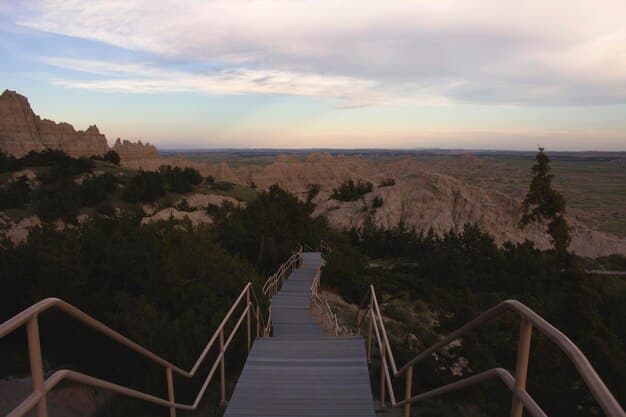
Selecting a National Monument to visit depends on your individual interests, schedule, and physical condition. No matter which monument you choose, you’re sure to have an experience that’s educational and rewarding.
Maximizing Your Experience: Tips and Tricks
To truly appreciate the beauty and significance of National Monuments, consider using these tips and tricks to enhance your visit.
Engage with Ranger Programs
Participate in ranger-led programs, guided tours, and interpretive talks to learn more about the monument’s history, geology, and ecology. Park rangers are knowledgeable and passionate about their work, providing valuable insights and answering your questions.
Immerse Yourself in the Landscape
Take time to explore the monument on foot, whether it’s a short nature trail or a multi-day backpacking trip. Immerse yourself in the landscape, observe the wildlife, and listen to the sounds of nature. Slow down and appreciate the details that often go unnoticed.
Photography allows you to capture memorable moments and share your experiences with others. Experiment with different angles, lighting conditions, and compositions to create unique images. Remember to respect the environment and followLeave No Trace principles when taking photos.
- Participate in ranger-led programs and tours.
- Explore the landscape on foot and immerse yourself in nature.
- Bring a camera to capture memorable moments.
- Practice responsible travel and leave no trace.
Consider visiting during off-peak seasons or weekdays to avoid crowds. You’ll have more space to explore and enjoy the monument’s serenity. Early morning and late afternoon often provide the best lighting for photography and wildlife viewing.
The art of travel is enhanced by preparation and experience. The more you plan, prepare and dive into the experiences presented to you, the richer and more memorable your experience is sure to be.
The Future of National Monuments: Conservation and Stewardship
The future of National Monuments depends on effective conservation and stewardship. These protected areas face numerous challenges, including climate change, development pressures, and increasing visitation. Understanding these challenges is crucial for preserving these treasures for future generations.
Addressing Climate Change
Climate change poses a significant threat to National Monuments, altering ecosystems, impacting water resources, and increasing the risk of wildfires and invasive species. Mitigation strategies such as reducing carbon emissions and implementing adaptive management practices are essential.
Managing Human Impact
Sustainable tourism practices are necessary to minimize the impact of visitation on National Monuments. This includes promoting responsible behavior, managing visitor access, and investing in infrastructure that supports conservation efforts. Balancing the needs of visitors with the protection of natural resources is a delicate but necessary task.
Community involvement is essential for the long-term success of National Monument conservation. This includes engaging local communities in planning and decision-making processes, supporting educational programs, and promoting economic opportunities that benefit both communities and the monuments themselves.
- Implement climate change mitigation strategies.
- Promote sustainable tourism and responsible visitation.
- Engage local communities in conservation efforts.
- Support research and monitoring programs.
Supporting research and monitoring programs is crucial for understanding the dynamics of National Monuments and informing management decisions. Ongoing research provides valuable data on ecosystem health, species populations, and the effectiveness of conservation strategies.
National Monuments are invaluable resources that require careful stewardship. By addressing climate change, managing human impact, engaging communities, and supporting research, we can ensure that these treasures continue to inspire and educate future generations.
Crafting Your Itinerary: Sample National Monument Tours
Crafting an itinerary that balances exploration, education, and relaxation is key to a memorable National Monument tour. Consider these sample itineraries to inspire your planning.
A Week in the Southwest: A Natural History Immersion
Begin your journey in Arizona, exploring the geological wonders of the Grand Canyon-Parashant National Monument. Then head to Utah, where you can hike along the dramatic trails of the Grand Staircase-Escalante National Monument. Finish your week in Colorado, visiting the ancient dwellings of Hovenweep National Monument.
A Cultural Journey: Tracing Native American Heritage
Explore the cliff dwellings and petroglyphs of Bandelier National Monument in New Mexico. Then travel to Arizona and discover the ancient ruins and canyon landscapes of Canyon de Chelly National Monument. Conclude your journey in Oklahoma, where you can explore the cultural heritage of the Washita Battlefield.
A single day can lead to powerful connection with land and place. Consider visiting one of the many monuments in your area, such as Craters of the Moon National Monument in Idaho, or exploring the lesser-known geology in the Black Canyon of the Gunnison National Park.
- Sample Itinerary 1: Southwest Natural History Immersion covering Arizona, Utah, and Colorado.
- Sample Itinerary 2: Native American Heritage Trail through New Mexico, Arizona, and Oklahoma.
- Sample Itinerary 3: A Day Trip of Discovery to monuments in Idaho and Colorado.
Creating a customized itinerary allows you to pursue your passions, explore new interests, and create lasting memories. Whether you’re interested in history, nature, or culture, there’s a National Monument tour that’s perfect for you.
By carefully planning your itinerary and engaging with the resources available, you can ensure that your National Monument tour is both enriching and memorable. Consider your interests, budget, and time constraints, and create a journey that’s uniquely yours.
| Key Aspect | Brief Description |
|---|---|
| 📍Planning the Visit | Research the monument and check accessibility and seasonal factors. |
| 🏞️ Must-Visit Sites | Explore Grand Staircase-Escalante or Canyon de Chelly. |
| 🎒 Maximize Experience | Engage with ranger programs and responsible travel practices. |
| 🌱 Future Action | Focus on climate change and community involvement. |
Frequently Asked Questions
▼
National Monuments are often smaller and can be created by presidential decree or congressional action, while National Parks typically require congressional action. National Monuments also often focus on preserving specific historical or scientific features.
▼
Accessibility varies. Some monuments are open year-round, while others may have seasonal closures due to weather conditions. Always check the official website for current conditions and closures before planning your visit.
▼
Permit requirements vary depending on the monument. Some monuments may require permits for certain activities, such as camping or backcountry hiking. Check the monument’s website or visitor center for details.
▼
Essentials for a National Monument visit include water, snacks, sunscreen, a hat, sturdy shoes, and appropriate clothing for the weather. Also, bring a map, compass, and first-aid kit if you plan on hiking or exploring remote areas.
▼
You can help protect National Monuments by practicing responsible travel, following Leave No Trace principles, and supporting conservation efforts. Stay on marked trails, pack out all trash, and respect wildlife and natural resources.
Conclusion
Exploring America’s National Monuments offers a unique opportunity to connect with history, nature, and culture. By planning your visits, maximizing your experiences, and practicing responsible stewardship, you can ensure that these treasures continue to inspire and educate future generations. Embark on your National Monument adventure and discover the hidden stories waiting to be uncovered.
